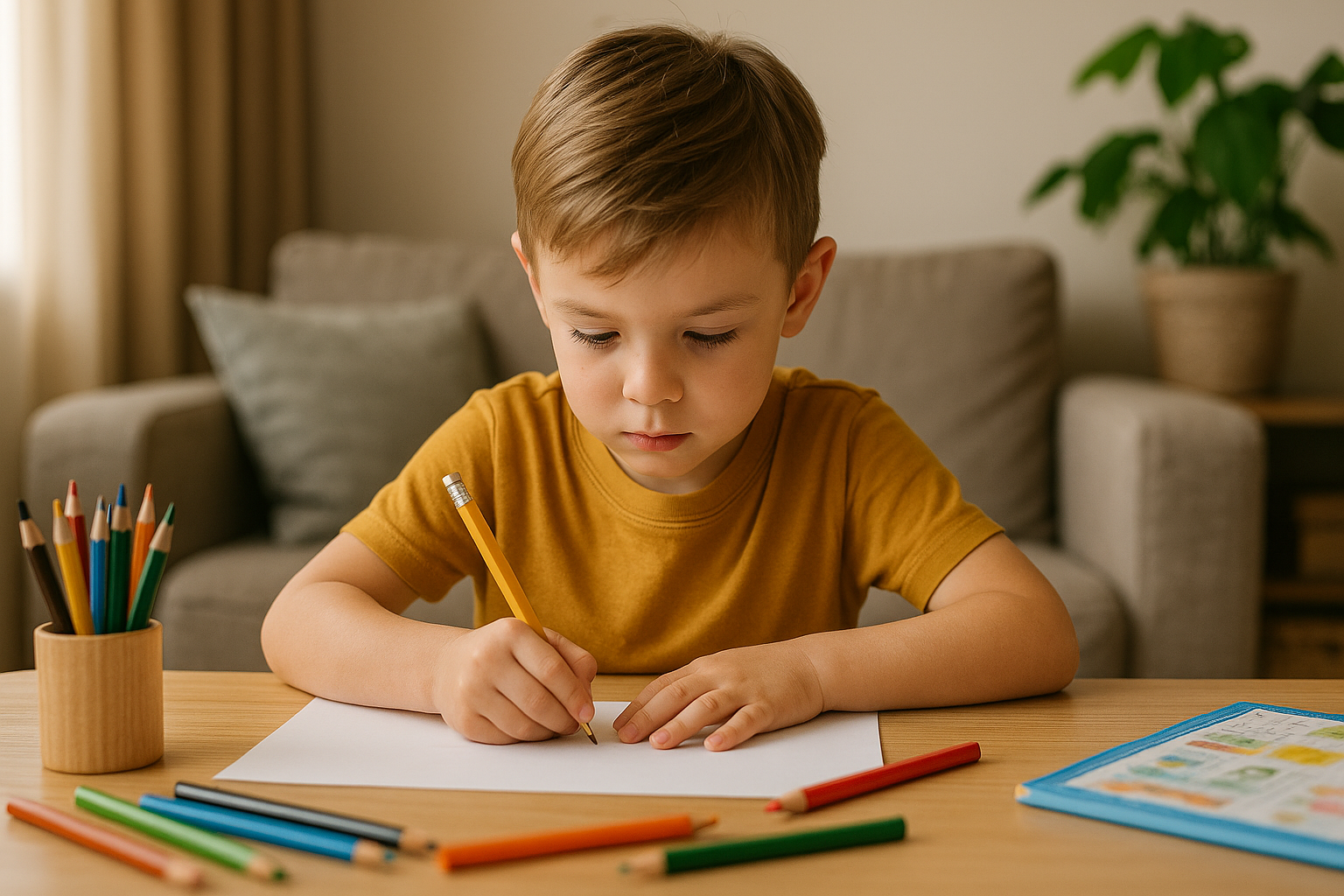In a world full of bright screens, noisy toys, and fast-paced distractions, helping a young child focus on a single activity can feel nearly impossible. But with the right strategies and a nurturing approach, you can guide your child to build attention span, persistence, and mindfulness—all essential skills for learning and development. This article will provide practical, age-appropriate ways to improve focus in children aged 2 to 6 during home-based activities.
Why Focus Matters in Early Childhood
Concentration is the foundation for:
- Learning new skills
- Completing tasks independently
- Solving problems
- Building confidence
While attention spans are naturally shorter in young children, they can be developed through consistent practice and the right environment.
Understanding Age-Appropriate Attention Span
A good rule of thumb:
Attention span = child’s age in minutes + a few more.
- 2 years old: 3–6 minutes
- 3 years old: 4–8 minutes
- 4 years old: 5–10 minutes
- 5–6 years old: up to 15 minutes or more with interest
That means short, focused activities work best—and transitions should be gentle.
Create a Distraction-Free Environment
1. Set up a dedicated space
- Choose a quiet area with minimal noise and movement.
- Use a small table, mat, or rug to define the workspace.
- Keep it visually simple: avoid too many toys or bright colors nearby.
2. Remove digital distractions
- Turn off the TV and background noise.
- Put tablets and phones out of sight.
- Play soft instrumental music only if it helps calm your child.
Choose the Right Activities
Children concentrate better when:
- The activity matches their developmental level
- The task is hands-on and tangible
- They feel in control or have choices
- The theme is fun and meaningful
Great focus-building activities include:
- Puzzles
- Matching games
- Building blocks
- Art projects
- Sensory bins
- Threading beads or pasta
- Water or sand play
Break Down Big Tasks Into Steps
A long activity can feel overwhelming. Instead:
- Explain the task briefly: “We’re going to make a bracelet.”
- Demonstrate step by step: “First, we pick the colors.”
- Give one instruction at a time.
- Celebrate each step: “Nice job choosing the string!”
Use visual aids if possible (pictures, examples, color-coded materials).
Establish a Routine That Supports Focus
Predictability helps children stay calm and attentive.
- Have a set time each day for focused play (e.g., after snack or before lunch).
- Use visual schedules or cards to show what comes next.
- Give countdowns: “In five minutes, we’ll do our puzzle time.”
Over time, children will expect and even look forward to this calm activity period.
Use a Timer to Set Clear Boundaries
Young children thrive on limits they can understand.
- Use a visual timer or sand timer.
- Start with short timeframes (5–10 minutes).
- Praise them when they complete the time: “You focused the whole time—great job!”
Gradually increase the duration as they get more comfortable.
Practice Active Supervision Without Hovering
Children focus better when they feel supported but not pressured.
- Sit nearby and be present without interrupting.
- Make quiet comments like “I see you’re working so carefully.”
- If they get stuck, ask: “What part are you thinking about right now?”
Avoid correcting too much. The goal is persistence, not perfection.
Encourage Independence and Ownership
Let children choose activities when possible. This gives them a sense of control and motivates them to finish.
- “Would you like to build with blocks or do a puzzle?”
- “Which color should we start with?”
Allowing small decisions boosts attention and effort.
Celebrate Progress, Not Just Results
Focus on:
- Effort: “You kept trying even when it was tricky.”
- Time on task: “You stayed focused for five minutes!”
- Improvement: “You didn’t ask for help this time—awesome!”
Avoid over-praising or rewarding with treats. Verbal recognition and attention are more effective and meaningful.
Try the “Focus Jar” Technique
Make a glitter jar together. Fill a jar with water, glue, and glitter.
- When shaken, say: “This is like your busy brain. Let’s watch it settle.”
- Encourage your child to take deep breaths until the glitter settles.
This simple visual can help calm their mind before or during an activity.
Manage Energy Levels
Children who are tired, hungry, or overstimulated will struggle to concentrate.
- Offer healthy snacks before a task.
- Include movement breaks: jumping, stretching, dancing.
- Use breathing exercises to reset: “Smell the flower, blow the candle.”
A well-regulated body helps create a focused mind.
Be Patient—It’s a Skill That Grows
Don’t expect instant changes. Focus takes time to build, especially in young children.
- Avoid comparisons with siblings or peers.
- Celebrate small victories.
- Reflect together: “What was easy today? What was hard?”
By practicing regularly and keeping it fun, your child will develop a stronger, more consistent ability to focus.
Final Thoughts: Nurture Focus with Love and Structure
Helping your child focus doesn’t require silence or strict rules—it requires patience, playfulness, and predictable routines. By designing engaging activities, reducing distractions, and supporting their effort, you’re not just improving their concentration—you’re shaping skills they’ll use for life.
